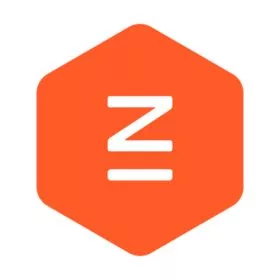AI Marketing Resources: Your Hub for Smarter Strategies
Discover a comprehensive collection of AI marketing resources designed to empower your business. Our AI Hub curates inspiring AI marketing content, leading AI agencies, essential AI tools, and insightful guides to help you master AI for smarter strategies.
Featured AI Marketing Agencies
Explore the best AI marketing agencies in the industry.
-
Beyond
HQ: New York+2 cities- USA
- San Francisco
- UK
- London
4.8The rating displayed is a weighted average derived from verified reviews across trusted platforms, further validated by the DAN team for agency authority.Premium MemberBeyond is a design and technology agency helping companies make progress by improving their customer experiences.Industries- Education
- Entertainment
- Healthcare
- IT & Technology
Clients- Just Eat
- Priceline
- Shutterstock
- Paramount
- SEGA
- Snap
- Undo
- BPM Music
- Brompton
- Montblanc
Budgets- Min. Project Budget: $50,000+
-
Avenue Z
HQ: MiamiFree MemberPowering AI visibility for leading brands & executives. We continuously refine your AI presence to ensure your brand stays relevant, accurate, and discoverable across the latest AI platforms.
Industries- Beauty & Cosmetics
- Finance
- Luxury
AI Marketing Articles
Latest updates and trends in AI
Featured AI Marketing Tools
Boost your strategy with DAN’s AI tools!
Artisan AI
Ava is the world’s first AI employee. She is a BDR who takes care of the end-to-end cold email demand generation process.
Adzooma
Save time, lower your ad spend and enjoy the best ad performance possible. Adzooma’s PPC optimization and automation tools enable you to run multiple advertising campaigns in just minutes per day. Build entire campaigns, make mass changes and easily track performance.
Duda
Duda is a leading white-label website building platform for digital agencies and web pros. Offering AI tools, automation workflows, and built-in SEO features, Duda enables agencies to create pixel-perfect websites at scale. Over 20,000 agencies trust Duda to build 1 million active sites.
HubSpot
HubSpot is a leading CRM platform that provides software and support to help businesses grow better. Their platform includes marketing, sales, service, and website management products that start free and scale to meet our customers’ needs at any stage of growth.
AI Marketing E-Guides by DAN
Learn AI strategies with DAN’s expert e-guides!
The AI Revolution in Web Design
This comprehensive guide, packed with insights and strategies from leading web design agencies, equips you to transform your web design process with AI.
DOWNLOAD EGUIDEAI Agents in Marketing: An Exclusive Guide by Top Agencies
Step into the world of AI agents: expert definitions, the most-used AI technologies across industries, and real case studies.
DOWNLOAD EGUIDEAI-Focused Upcoming Events
Keep up with the latest Artificial Intelligence Events
AI Infra Summit 2025
AI Agents Summit 2025
AgentRush: Top AI Agents
Find powerful AI agents to boost efficiency!
Coming Soon








































